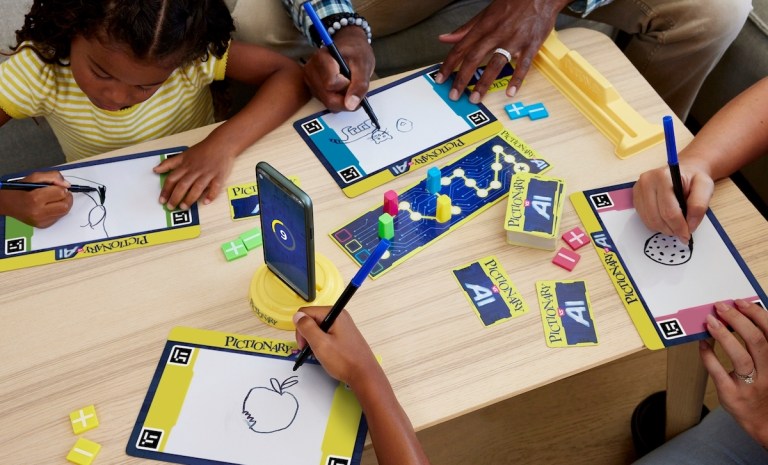This week, Mattel unveiled Pictionary Vs. AI, an updated edition of iconic quickdraw game Pictionary. The introduction marks the inaugural instance of AI technology being incorporated into a traditional board game. In this iteration, all participants draw, while the AI takes on the role of guessing.
Securing the AI’s accurate guess is not the sole path to gaining an advantage, however. Players can also accumulate points by predicting whether the AI will correctly decipher sketches drawn by other players.
On the surface, the introduction of AI in board games could seem like a promising venture. The tech offers players the opportunity to enjoy games even when they can’t gather physically with friends or family. It also provides a solution for solo players looking to enjoy traditional board games without a group of participants. However, the concern lies in whether the AI integration may inadvertently encourage isolation.
Removing the Human Element
One argument against AI integration is that board games have always been a social activity, fostering face-to-face interaction and bonding. The essence of traditional board games lies in the laughter, competition and camaraderie they create among players. When AI takes over certain roles traditionally played by humans, it might undermine the social aspect that makes board games enjoyable.
Moreover, the introduction of AI might alter the way players approach board games. In the case of Pictionary Vs. AI, the focus shifts from trying to guess your friends’ drawings to trying to outsmart the AI. While this adds an element of competition and strategy, it also changes the game’s fundamental appeal.
Advertisement: Scroll to Continue
Consumers’ willingness to embrace this new format remains uncertain. While some players might appreciate the convenience of playing board games alone or with AI companions, others may resist the change, yearning for the traditional experience. It’s crucial for game manufacturers like Mattel to carefully gauge consumer sentiment and adapt offerings accordingly.
The Value in Human Error
Human error in board games often leads to unpredictable outcomes and unexpected twists, keeping the gameplay fresh and exciting. It’s the moment when a novice player unexpectedly outwits a seasoned opponent or when a risky move pays off against all odds. These errors foster an environment where learning, adaptation and the joy of discovery are paramount.
When AI takes on roles traditionally filled by humans in board games, it may eliminate the possibility of human error and the unexpected moments that come with it. AI algorithms are designed for precision and accuracy, which can lead to highly calculated and predictable gameplay. While this might appeal to some, it could also strip away the authenticity and spontaneity that players cherish.
Other AI-Infused Games
Hasbro, the publisher of tabletop game Dungeons and Dragons, expanded its involvement in AI in July through a collaboration with Xplored, the developer behind digital board game platform Teburu.
Hasbro Senior Vice President and General Manager of Global Brands Adam Biehl said at the time that the partnership would enable the company to “deliver innovative gameplay to our players and fans, limitless digital expansions to physical games, seamless onboarding and powerful AI-driven game mechanics.”
Biehl also mentioned in a separate interview that the company could leverage AI to create experiences capable of instantaneously reacting to player decisions and potentially simplifying rules to provide a smoother experience for newcomers.
Striking a Balance
The challenge lies in striking a balance between the convenience and innovation that AI can offer and preserving the authentic, human-centered nature of board games. Manufacturers must carefully consider how AI is incorporated, ensuring that it enhances the gaming experience without overshadowing the human elements that make board games fun.
For all PYMNTS AI and Retail coverage, subscribe to the daily AI and Retail Newsletters.

